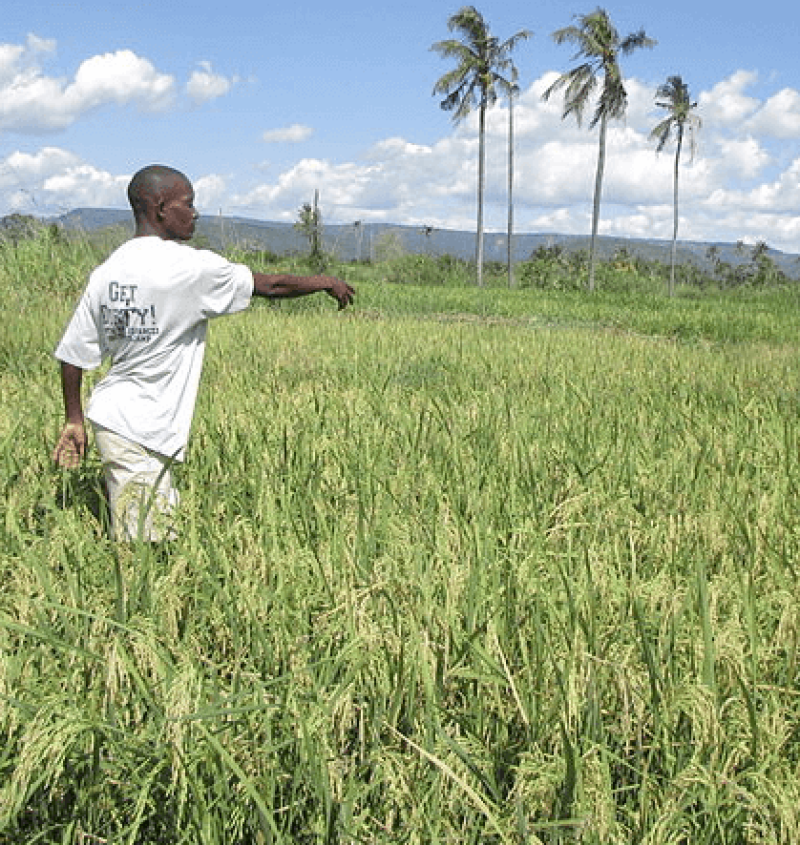According to FAO projections, by 2035, a 26% increase in rice production will be necessary to feed the growing population (Cassman et al., 2003; Seck et al., 2012). Farmers in Sub- Saharan Africa (SSA) produce about 12 million metric tons of rice annually, while importing another 12 million metric tons…. Most of the rice in SSA is produced and consumed by small-scale farmers who are often constrained by input costs, mainly fertilizer, and access to new technologies that could help them increase food production.
…N fertilizer costs comprise an important fraction of total production costs in crops (Tirol-Padre et al., 1996). Yet, estimates of the world nitrogen use efficiency (NUE) have been calculated to be as low as 33% for cereals (Raun and Johnson, 1999)…. The negative environmental effects of excess N are well documented…. Therefore there is an urgent need to increase NUE to mitigate the economic and environmental costs of rice production.
. . . .
In this study, we report the production of marker-free HvAlaAT transgenic lines … and present the results of confined field trials in two locations. Our results clearly showed that pOsAnt1:HvAlaAT overexpression significantly increased plant biomass and grain yield through an increased number of productive tillers compared to controls under limited N supply. …
The GLP aggregated and excerpted this blog/article to reflect the diversity of news, opinion and analysis. Read full, original post: Development and field performance of nitrogen use efficient rice lines for Africa
































